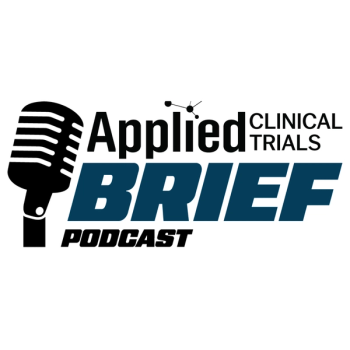
Designing Feasible Protocols with Real-World Data
Learn how incorporating real-world data at study design can improve feasibility, reduce amendments, and align eligibility with findable patients across geographies.
In a recent video interview with Applied Clinical Trials, Matt Holms, vice president of sales at Citeline, discussed the persistent barriers slowing patient recruitment and how technology and data-driven strategies can help modernize clinical trial operations. He outlined factors such as site performance variability, investigator scarcity, and protocol complexity as key contributors to trial delays, emphasizing the need for more realistic protocol design informed by real-world data. Holms explained how AI and tokenization can strengthen patient–protocol matching, streamline feasibility, and support responsible data use. He also highlighted the importance of therapeutic area–specific recruitment approaches, sponsor-led site selection oversight, and engagement with non-research healthcare providers to expand patient access—calling for greater industry collaboration to create a more efficient and equitable recruitment ecosystem.
The below interview transcript was lightly edited for clarity.
ACT: How can real-world data be leveraged more effectively to improve targeting and outreach during the recruitment process?
Holms: Yeah, so I think it starts with the protocol design. There’s a lot out there in the news these days. I mean, you can even see the company that won the DPHARM Idol competition is focused on this. There’s really, you know, protocols can be written to be perfect in theory but not realistic in practice, is often what we’re seeing.
And there’s a lot of data to support this. Eighty-five percent of these studies typically have major amendments, and it kind of goes back to what is being used to plan these studies from the protocol design, really being the beginning part of the process. And when they’re doing that, are they using real-world patient data to determine that protocol design? Do they have access to that real-world patient data, or are they using silos of data that they have to create these insights—to create these protocols—spreadsheets, internal sources, past trials often dictate a lot of the planning?
And so, you have manual, really inefficient processes for accessing feasibility, where real-world data is just starting to become more in the forefront of the planning purpose. So you certainly have, I think, a lot of people just doing what they’ve done before. And there’s a lot of smart people working on this. But the challenge is that you create a protocol that’s looking for a unicorn patient, and then you hand that protocol to the operations teams, and it’s incredibly difficult for them to operationalize it.
And everybody’s trying to differentiate themselves from the competition, and it makes sense why these protocols are being written how they’re being written, but you’re trying to really force a square peg through a round hole, which is not working. So using the real-world data as best as possible at the beginning of the process to really understand: does this patient exist? Does it still check the protocol, still check the corporate boxes that we need to for our market potential? And weighing that balance to decide what that protocol ultimately looks like is really key to the actual recruitment success.
We at Citeline have so much data with respect to feasibility. We recently, in the last four years, moved into the recruitment space downstream because it was a natural progression for us. But we always had proprietary data that now we’re aggregating with real-world data, and that’s really the combination of what the market is driving toward to plan these studies more efficiently. Because you could have the most beautiful protocol in the world, but if you can’t ever find these patients, what’s the point, right?
So there’s a lot of applications that I think can be incredibly beneficial. There are still certainly gaps—like there’s much more plentiful RWD in the US versus outside of the US—and there are privacy laws and restrictions that impair the visibility at the patient and the provider level that you get in the US But there are certainly a lot of people making strides to try to get that data to have that same kind of sophistication when they’re planning outside of the US.
Newsletter
Stay current in clinical research with Applied Clinical Trials, providing expert insights, regulatory updates, and practical strategies for successful clinical trial design and execution.





.png)



.png)



.png)
.png)
